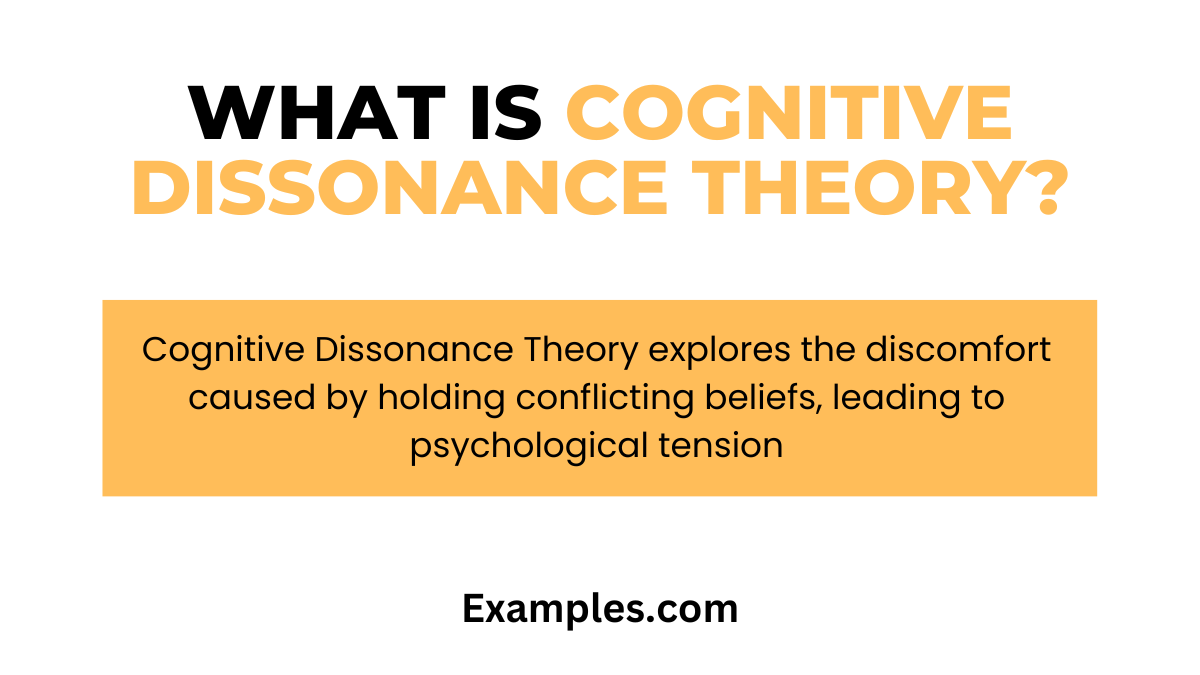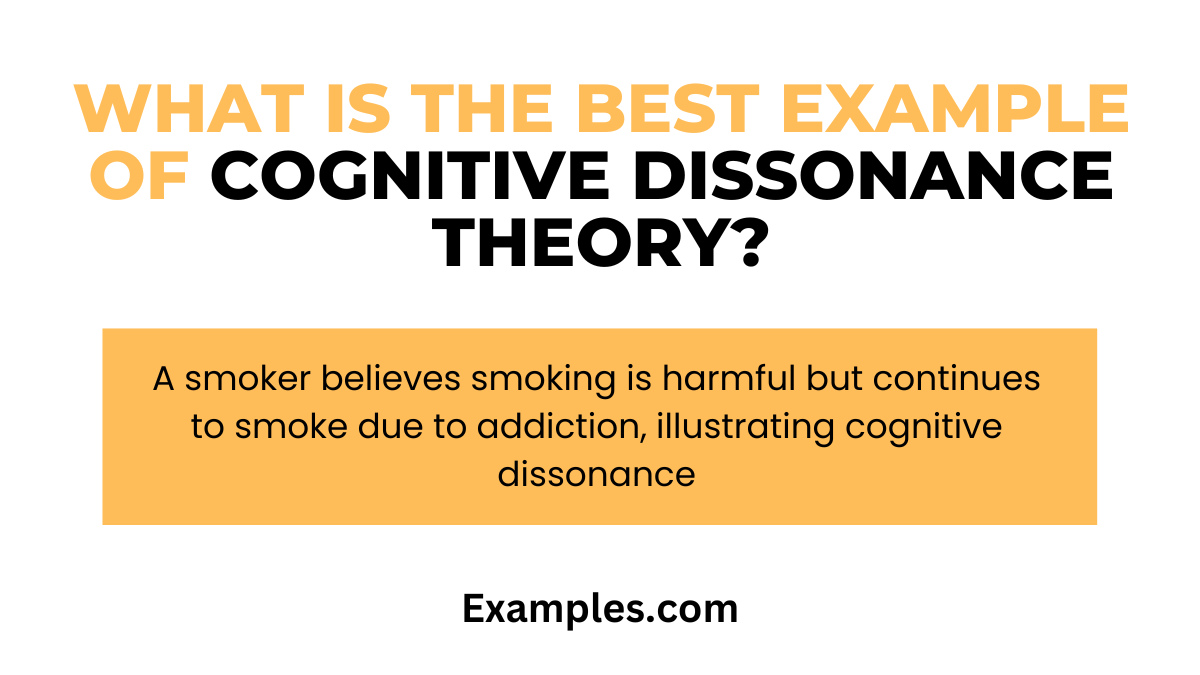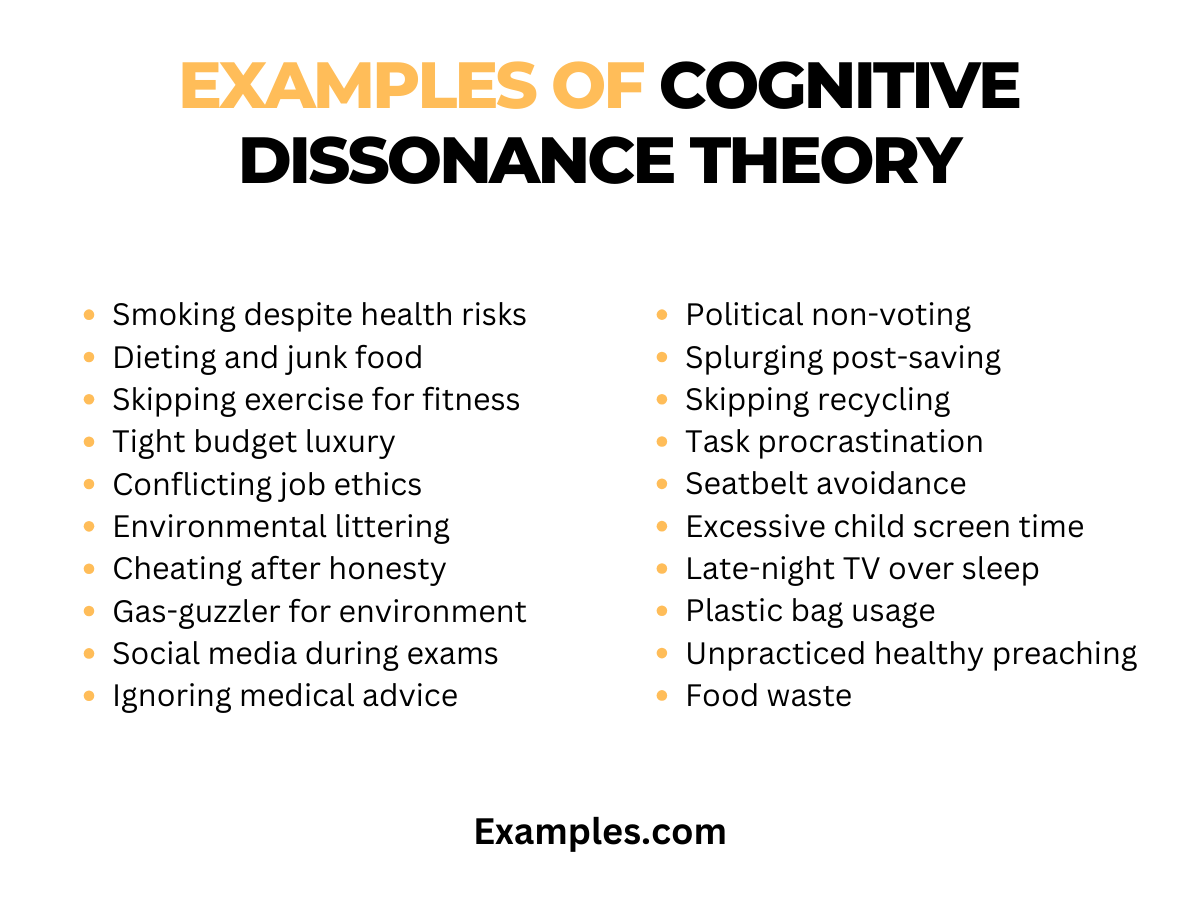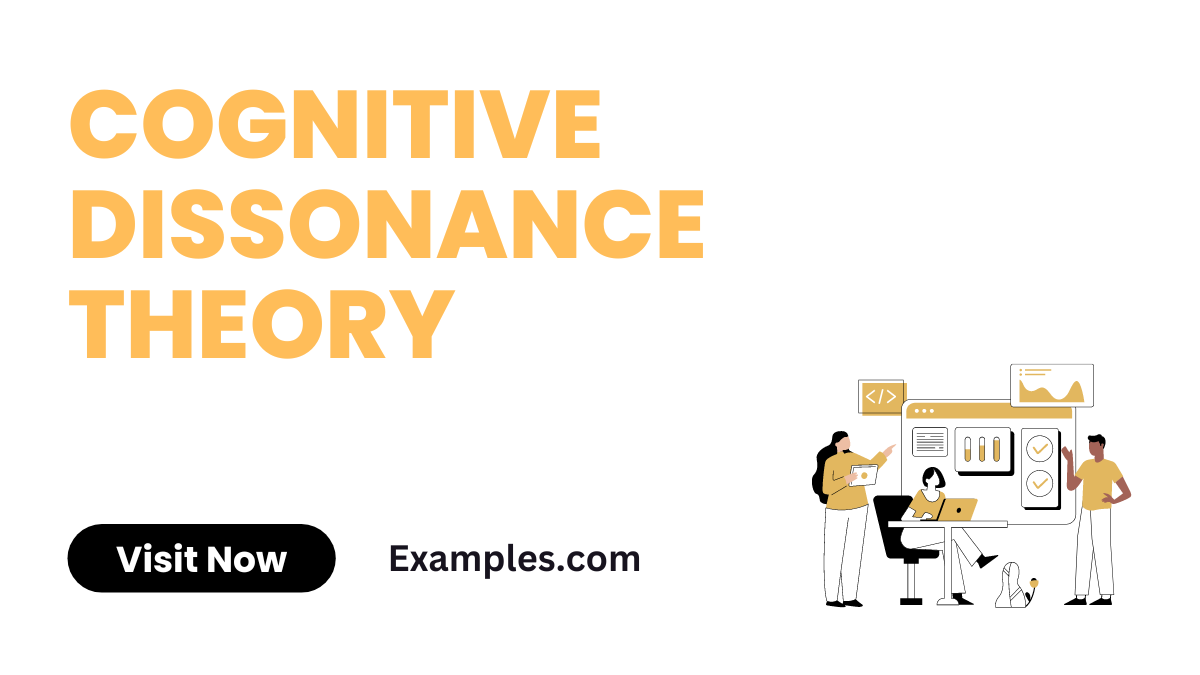19+ Cognitive Dissonance Theory Examples
Cognitive Dissonance Theory, a pivotal concept in psychology, explores the tension arising when our beliefs clash with our actions. This guide delves into the intricate workings of this theory, offering insightful analyses and practical applications. Understand how cognitive dissonance influences decision-making, shapes our perceptions, and drives behavioral changes. Whether you’re a student, professional, or curious mind, this comprehensive guide illuminates the complexities of cognitive dissonance, providing valuable knowledge to navigate life’s contradictory scenarios.
What is Cognitive Dissonance Theory?

Cognitive Dissonance Theory, formulated by Leon Festinger, explains the mental discomfort experienced when holding two or more contradictory beliefs, ideas, or values. It’s a psychological framework suggesting that individuals are driven to reduce this dissonance by altering their attitudes, beliefs, or behaviors, leading to a more harmonious state of mind.
History
Who Created: Leon Festinger
Date: 1950
Their research focused on the observation that people tend to experience discomfort when holding conflicting beliefs or attitudes. Festinger’s book, “A Theory of Cognitive Dissonance,” published in 1957, outlined the theory’s foundations. The theory proposed that individuals strive for cognitive consistency and would take steps to reduce the discomfort caused by inconsistency. Over the years, cognitive dissonance theory has been influential in psychology, sociology, and communication studies. It has been applied to various contexts, shedding light on decision-making, attitude change, and persuasion.
What is the Best Example of Cognitive Dissonance Theory?

A classic example of cognitive dissonance is a smoker who knows smoking is harmful but continues to smoke. This behavior conflicts with the knowledge of its dangers, causing psychological discomfort. To alleviate this, the smoker may downplay the health risks or justify smoking by emphasizing stress relief.
20 Examples of Cognitive Dissonance Theory

Cognitive Dissonance Theory, a psychological concept, highlights the mental discomfort experienced when holding two conflicting beliefs, values, or attitudes. This theory is significant in understanding human behavior, especially in areas like decision-making, attitude change, and problem-solving. In intrapersonal communication, it plays a crucial role in self-concept and personal growth. Here are 20 unique examples illustrating Cognitive Dissonance Theory:
- Smoking despite knowing health risks: A smoker continues to smoke even though they are aware of the severe health risks involved, causing mental discomfort due to the conflict between their actions and health knowledge.
- Eating junk food while dieting: Someone on a diet eats a high-calorie meal, leading to discomfort as this action contradicts their goal of healthy eating.
- Avoiding exercise despite fitness goals: A person who sets a goal to be fit but regularly skips exercise experiences cognitive dissonance between their desire for fitness and lack of action.
- Buying expensive items on a tight budget: Purchasing luxury items when trying to save money creates a conflict between financial goals and spending habits.
- Working in a job that conflicts with personal values: An individual continues to work in a job that goes against their personal ethics, leading to internal conflict.
- Littering despite environmental awareness: Throwing trash improperly while understanding the importance of environmental conservation.
- Cheating on a test after advocating for honesty: A student who cheats on an exam after preaching the importance of honesty to peers experiences cognitive dissonance.
- Driving gas-guzzling vehicles while advocating for environment: Using a fuel-inefficient car despite advocating for environmental protection.
- Overusing social media during exams: A student overuses social media despite knowing it’s crucial to focus on studies during exam time.
- Ignoring medical advice: Continuously ignoring doctor’s advice despite understanding its importance for health.
- Not voting despite political opinions: Strongly expressing political views but not participating in elections.
- Splurging on unnecessary items post-declaring saving goals: Buying non-essential items shortly after setting a goal to save money.
- Skipping recycling: Not recycling waste despite understanding its environmental benefits.
- Delaying important tasks: Procrastinating on crucial tasks despite knowing their importance and deadlines.
- Not wearing a seatbelt: Choosing not to wear a seatbelt despite understanding its safety benefits.
- Excessive screen time for children: Allowing children excessive screen time while knowing the negative effects.
- Ignoring sleep for late-night TV: Watching late-night TV despite understanding the need for adequate sleep.
- Using plastic bags: Using plastic bags regularly despite advocating for reducing plastic usage.
- Not practicing what is preached: Advocating for a healthy lifestyle but not following it personally.
- Wasting food: Regularly wasting food while being aware of global hunger issues.
What are the Components of Cognitive Dissonance Theory?
Cognitive Dissonance Theory, a significant concept in social psychology, explains the discomfort that arises when a person’s beliefs, attitudes, or behaviors conflict with each other. Here are five key components of this theory:
- Belief Conflict: This occurs when two simultaneously held beliefs or attitudes are contradictory, leading to a state of discomfort.
- Behavior-Belief Mismatch: When an individual’s actions are not in harmony with their beliefs or attitudes, it triggers dissonance.
- Dissonance Reduction: To alleviate the discomfort, individuals tend to modify their beliefs, attitudes, or behaviors.
- Importance of Values: The theory posits that dissonance is more intense when the conflicting beliefs or behaviors are central to one’s value system.
- Cultural Influence: The extent and nature of cognitive dissonance can vary based on cultural contexts and social norms.
What Causes Cognitive Dissonance?
The factors leading to cognitive dissonance are diverse. Here are five common causes:
- Forced Compliance: Engaging in behavior that contradicts personal beliefs, especially under pressure, often leads to dissonance.
- Decision Making: Post-decisional dissonance arises when choosing between two or more conflicting options.
- Effort Justification: Investing significant effort into a task that doesn’t yield the expected outcome can cause dissonance.
- Information Contradiction: Encountering information that challenges existing beliefs or perceptions can trigger dissonance.
- Personal Responsibility: Realizing that one’s actions have led to negative outcomes can lead to a dissonant state.
Impacts of Cognitive Dissonance
Cognitive dissonance has several psychological and behavioral impacts:
- Stress and Anxiety: The mental discomfort caused by dissonance can lead to heightened stress and anxiety.
- Rationalization: People often rationalize their behavior or beliefs to reduce dissonance.
- Attitude Change: Cognitive dissonance can lead to a change in beliefs or attitudes to align with one’s actions.
- Avoidance Behavior: To prevent dissonance, individuals might avoid situations or information that could create conflict.
- Improved Decision Making: Dissonance can also have a positive impact, prompting individuals to make more thoughtful decisions in the future.
Cognitive Dissonance Theory in Psychology
In psychology, cognitive dissonance theory has wide-ranging implications:
- Behavior Modification: The theory is used to understand and influence changes in behavior.
- Therapy and Counseling: It’s applied in therapeutic settings to help individuals reconcile conflicting beliefs and behaviors.
- Marketing and Persuasion: Understanding cognitive dissonance is crucial in fields like marketing, where consumer attitudes and decisions are influenced.
- Social Psychology Research: It’s a foundational theory in social psychology research, explaining various aspects of human interaction and behavior.
- Educational Applications: In educational settings, cognitive dissonance can be utilized to foster critical thinking and adaptability in learning processes.
Cognitive Dissonance Theory is vital for effective communication. This guide offers practical insights into understanding and navigating the complexities of cognitive dissonance. By applying the provided tips, individuals can bridge the gap between conflicting beliefs and actions, fostering healthier interpersonal communication and decision-making. Embracing cognitive dissonance as a tool for personal growth and improved communication is key to achieving greater harmony in various aspects of life.



